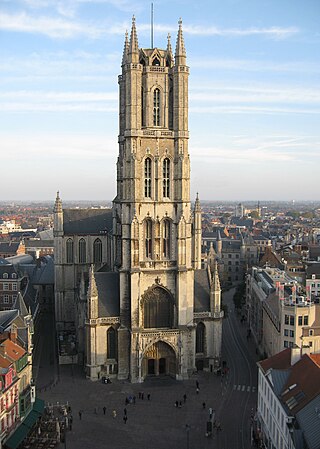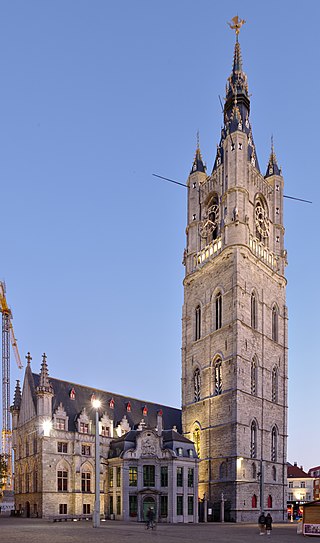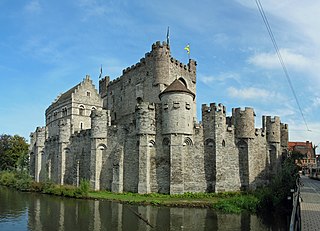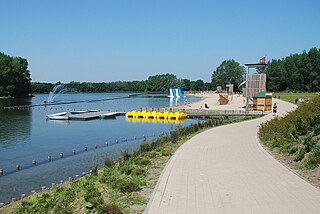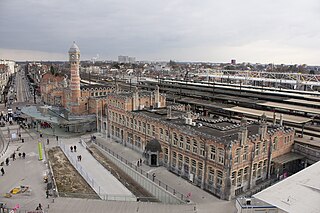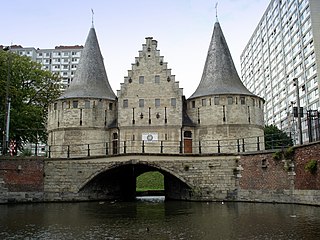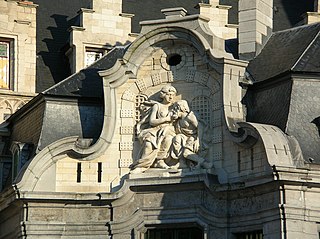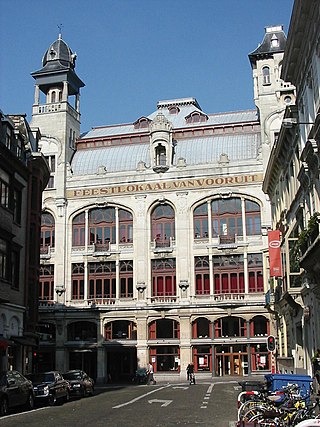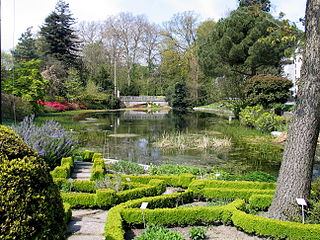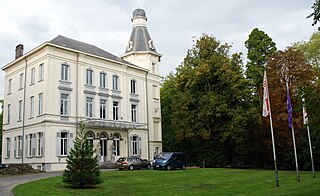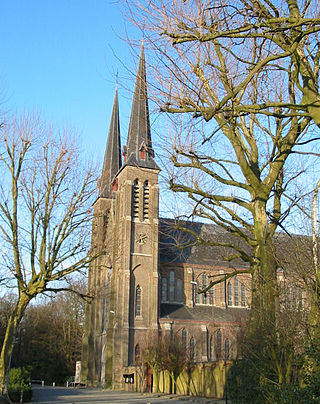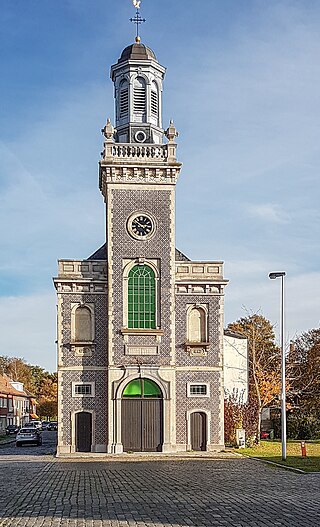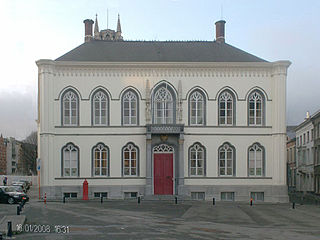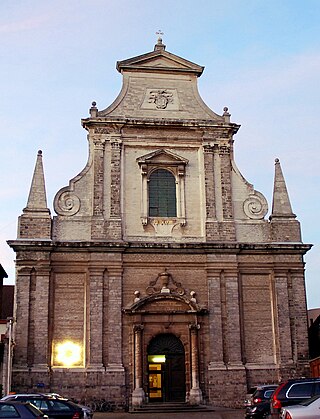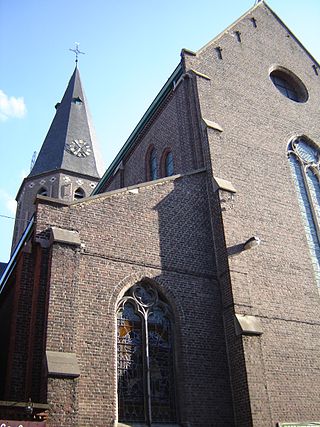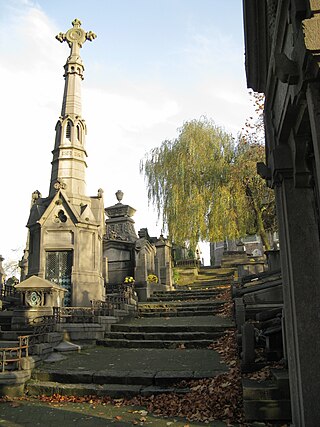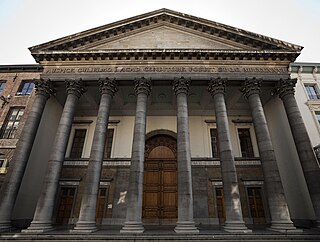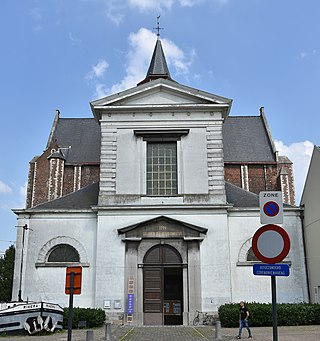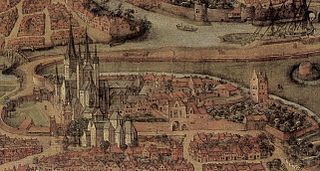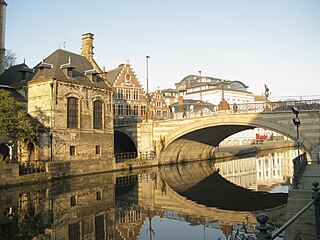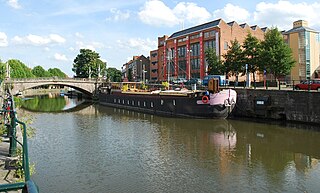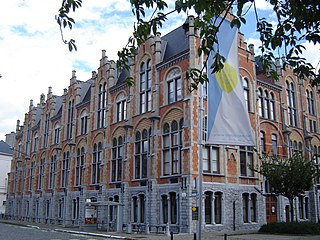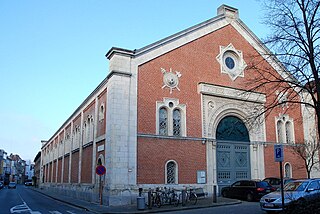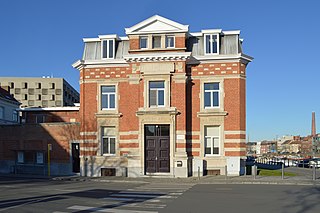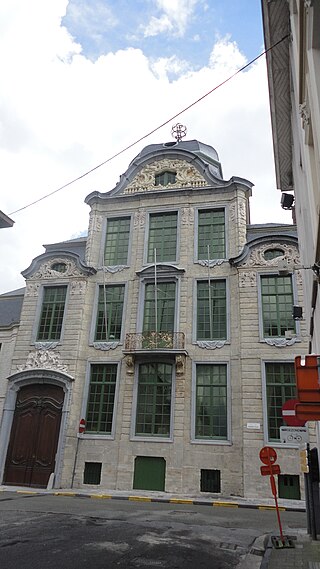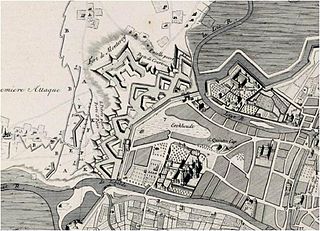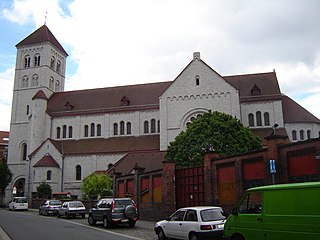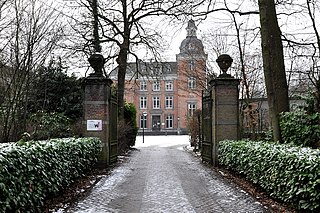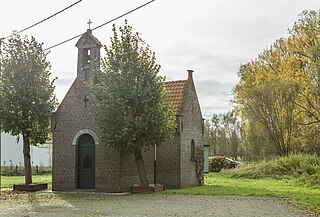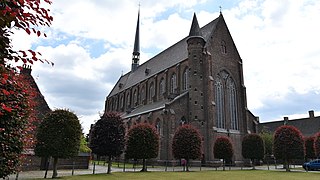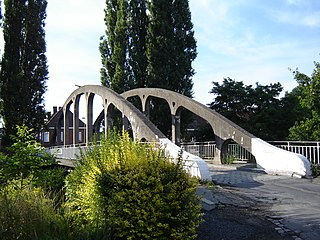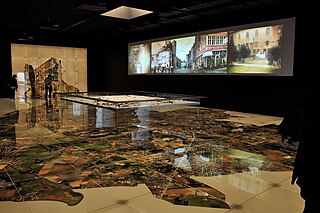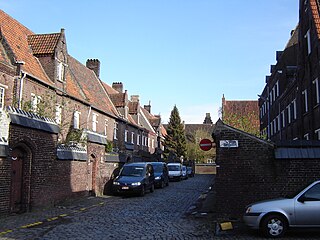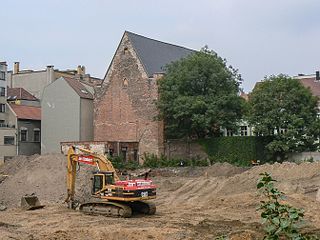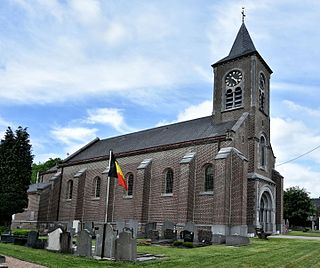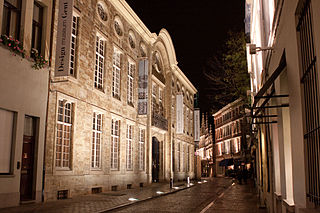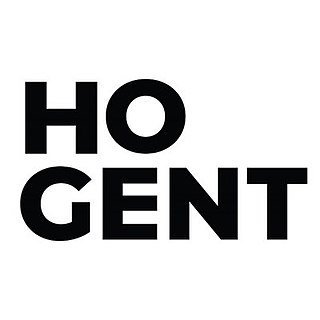46 Sights in Ghent, Belgium (with Map and Images)
Legend
Welcome to your journey through the most beautiful sights in Ghent, Belgium! Whether you want to discover the city's historical treasures or experience its modern highlights, you'll find everything your heart desires here. Be inspired by our selection and plan your unforgettable adventure in Ghent. Dive into the diversity of this fascinating city and discover everything it has to offer.
Sightseeing Tours in GhentActivities in GhentSaint Bavo's Cathedral, also known as Sint-Baafs Cathedral, is a Roman Catholic cathedral in Ghent, Belgium. The 89-metre-tall (292 ft) Gothic building is the seat of the Diocese of Ghent and is named for Saint Bavo of Ghent. It contains the well-known Ghent Altarpiece, also called the Adoration of the Mystic Lamb.
Wikipedia: Saint Bavo's Cathedral, Ghent (EN), Heritage Website
The Belfry of Ghent is one of three medieval towers that overlook the old city centre of Ghent, Belgium; the other two belonging to Saint Bavo Cathedral and Saint Nicholas' Church. Its height of 91 metres (299 ft) makes it the tallest belfry in Belgium. The belfry of Ghent, together with its attached buildings, belongs to the set of Belfries of Belgium and France, a UNESCO World Heritage Site.
The Gravensteen is a medieval castle in the city of Ghent, East Flanders in Belgium. The current castle dates from 1180 and was the residence of the Counts of Flanders until 1353. It was subsequently re-purposed as a court, prison, mint, and even as a cotton factory. It was restored over 1893–1903 and is now a museum and a major landmark in the city.
4. Blaarmeersen
The Blaarmeersen is a 100-hectare recreation area in the Belgian city of Ghent. It is located along the Ringvaart, the Leie and the Watersportbaan. It is a green area with bushes, sunbathing areas and hiking trails around a central lake with a beach, a walkable hill mountain with a watchtower, and sports infrastructure.
5. Gent-Sint-Pieters
Gent-Sint-Pieters railway station is the main railway station in Ghent, East Flanders, Belgium, and the fourth-busiest in Belgium and busiest in Flanders, with 17.65 million passengers a year. The station is operated by the National Railway Company of Belgium (NMBS/SNCB).
Wikipedia: Gent-Sint-Pieters railway station (EN), Heritage Website
6. Rabot
The Rabot is a monument in Ghent and also the name of the district where this monument is located. There used to be a rabot on the site of the building, but the name Rabot has been transferred over the years to the towers to defend this hydraulic construction.
7. Mammelokker
The Mammelokker is a sculpture on the tympanum of a Ghent building from around 1741 by master builder David 't Kindt. The name is also used for the building itself, a former jailer's house that leans against the cloth hall at the Belfry of Ghent. The relief is a depiction of the Roman story of Cimon and Pero. In this legend, Pero saves her father from starvation by suckling him into prison. This is where the statue owes its name Mammelokker. It has been a protected monument since December 28, 1936 and has been a Unesco World Heritage Site since 1999 as part of the Belfry.
8. VIERNULVIER
Vooruit is a historic complex in Ghent, Belgium. Vooruit was originally the festival and art centre of the Ghent-based labour movement, with a ballroom, cinema, theatre, etc. It is now mainly used for concerts and other cultural events.
9. Plantentuin UGent
Ghent University Botanic Garden is the botanical garden of Ghent University and is located next to the Ledeganck complex, on the edge of the Citadel Park in Ghent. The botanical garden is a member of the Association of Botanical Gardens and Arboreta and affiliated with Botanic Gardens Conservation International, a non-profit organization that unites botanical gardens in a worldwide collaborative network to achieve the conservation of plant biodiversity.
10. Kasteel Borluut
Borluut Castle is a castle in the Belgian village of Sint-Denijs-Westrem, a borough of Ghent. The castle is located in the Kleine Gentstraat, close to the village centre. Since 1997, the castle, together with the park and outbuildings and the castle avenue, has been a protected monument.
11. Oostakker Basilica
The Basilica of Our Lady of Lourdes is a Roman Catholic church at Oostakker, near Ghent in Belgium. Built in neogothic style at the end of the XIXe century it is the most important centre of Marian pilgrimage in Flanders.
12. Sint-Antonius Abtkerk
The St. Anthony Abbot Church of the Ghent district of Meulestede is located near the Middendok in the port area of the municipality of Ghent. The church is dedicated to Saint Anthony of Egypt, also referred to as Anthony Abbot.
Wikipedia: Sint-Antonius Abtkerk (Meulestede) (NL), Heritage Website
13. Bisschoppelijk Paleis
The Episcopal Palace of Ghent is the administrative seat of the diocese of Ghent and the residence of the bishop. The current building is located on the Bisdomplein in the East Flemish capital of Ghent. It is protected as a monument.
Wikipedia: Bisschoppelijk Paleis van Gent (NL), Heritage Website
14. Begijnhof Ter Hoye
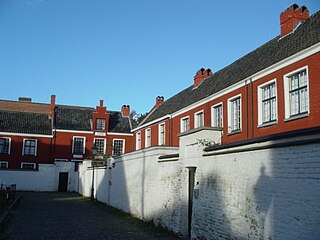
The small beguinage O.L.V. Ter Hooyen is situated in southern area of Ghent. This beguinage was built on the ‘Groene Hooie’, between the ‘Hooipoort’ and the ‘Vijfwindgatenpoort’. That is how this little beguinage got its name.
15. Het Pand

Het Pand is a former Dominican monastery in the Belgian city of Ghent. Since 1963, Het Pand has been owned by Ghent University, which has housed a cultural centre and several scientific museums in the building. The entire building is recognized as a monument.
16. Onze-Lieve-Vrouw ter Hoyekerk
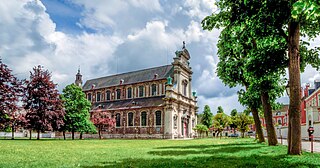
The Church of Our Lady of the Hoye, also known as the Church of Our Lady of the Presentation, is a church building in the Belgian city of Ghent. It is part of the Small Beguinage of Ghent. The beguinage and the church got their name from a meadow that was called the "Green Hoye" in the early Middle Ages.
Wikipedia: Onze-Lieve-Vrouw ter Hoyekerk (NL), Heritage Website
17. Kerk Paters Karmelieten
The Carmelite Fathers' Monastery Church, also known as the Discalced Carmelite Monastery Church, is a church building in the Belgian city of Ghent. The church was built by the Discalced Carmelites who settled in the city from 1651 onwards.
Wikipedia: Kloosterkerk van de Ongeschoeide Karmelieten (Gent) (NL), Heritage Website
18. Sint-Coletakerk
The Sint-Coleta Church is a church in the Belgian city of Ghent. The church is located in the south of the city center, between the Heuvelpoort and the railway. It is a neo-Gothic church with three naves and five bays, attributed to Auguste Van Assche or one of his followers. The crossing tower was built in 1911, to a design by Gerard De Meyer. The church stands between the other buildings and only ends with the façade on the street side. In its 124 years of existence, this church has only had two organists, each of whom has played the organ for a lifetime. The last of the two was Edgard Guns who had been a cantor-organist for more than 70 years.
19. Begraafplaats Sint-Amandsberg Campo-Santo
The Campo Santo of Ghent, Belgium, is a famous Roman Catholic public burial ground in Sint-Amandsberg. The Campo Santo has been declared a historical monument by the government. This cemetery is located in the district of Dampoort.
20. Aula UGent
The Aula Academica of Ghent University is a university auditorium built in 1826 on Voldersstraat in the Belgian city of Ghent. The building has played an important role in the history of the United Kingdom of the Netherlands, Belgium and the Flemish Movement.
21. Opera Vlaanderen

The Royal Opera of Ghent was the more than 100-year-old independent Ghent city opera until its merger in 1981 with the Royal Flemish Opera in Antwerp. Both city operas were merged into the Opera voor Vlaanderen organisation, which was renamed Opera Ballet Vlaanderen in 2014.
Wikipedia: Koninklijke Opera (Gent) (NL), Website, Heritage Website
22. Sint-Salvatorkerk
The Holy Christmas Church or Saint Salvator's Church is a church in the Belgian city of Ghent. The church is located in the north of the medieval city center. The church was protected as a monument in 1943. In the Ghent dialect it is called Seleskest, and that name is also used for the parish or the neighborhood around the church.
23. St Bavo’s Abbey
Saint Bavo's Abbey is a former abbey in the currently Belgian city of Ghent. It was founded in the 7th century by Saint Amand, who also founded Saint Peter's Abbey, Ghent, near the confluence of the Leie and Scheldt rivers. Originally, the abbey was also called Ganda, a name of Celtic origin, meaning "river mouth", referring to the Leie river debouching into the Scheldt river.
Wikipedia: Saint Bavo's Abbey (EN), Website, Heritage Website
24. Sint-Michielsbrug
The St. Michael's Bridge is a stone arch bridge in the center of the Belgian city of Ghent. The bridge is located over the Leie, on the south side of the Graslei and the Korenlei. The current monumental bridge was built in the period 1905-1909, after the construction of the post office. Both the Sint-Michielsbrug and the Old Post Office building are creations of architect Louis Cloquet.
25. Bourgoyen-Ossemeersen
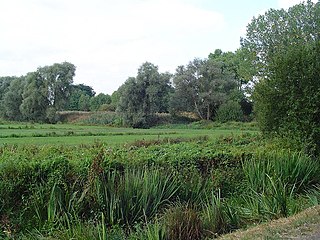
Bourgoyen-Ossemeersen is a nature reserve on the outskirts of the Belgian city of Ghent. It lies mainly in the district of Mariakerke and covers 230 hectares. It mostly consists of wet, often flooded, meadows interspersed with ditches and canals, and is an important wintering area for water birds. It acts as a buffer zone between the city and the R4 ring road's noise-reducing barriers have been erected to lessen the road's impact on the wildlife.
26. Museum of Industry
The Museum of Industry, Work and Textiles is a museum in Ghent in Belgium. Ghent was at the centre of the Flanders textile region. The museum is an Anchor point on the European Route of Industrial Heritage.
27. Rommelaere Instituut
The Rommelaere Institute is a neo-Gothic building of the University of Ghent and housed the Institute of Hygiene, Bacteriology and Forensic Medicine of the Faculty of Medicine. The Medical Biotechnology Center of the Flemish Institute for Biotechnology VIB had also moved to the site, until it moved to Zwijnaarde.
28. Rijschool voor de ruiterij van de Krijgsbezetting
The Arena Van Vletingen is a building in the Belgian city of Ghent, built between 1851 and 1853. The former roadway now serves as a hall for rhythmic gymnastics. It was designed by architect Lodewijk Roelandt.
29. Zwembad Van Eyck
The Van Eyck swimming pool is the oldest swimming pool in Belgium and is located at the Portus Ganda in Ghent. It is known for its Art Deco décor and is often referred to as "the most beautiful swimming pool in Belgium". It was built in 1886 and includes a 25-meter pool, tub baths, changing rooms, a cafeteria, and the administration of the nearby marina. In 2001 it was thoroughly renovated.
30. Koninklijke Academie voor Nederlandse Taal- en Letterkunde
The Royal Flemish Academy for Dutch Language and Literature is an institution focused on the study and promotion of the Dutch language in Flanders. It is the Dutch-speaking counterpart of the Académie royale de langue et de littérature françaises de Belgique and one of Belgium's numerous academies.
Wikipedia: Royal Academy of Dutch Language and Literature (EN), Heritage Website
31. Onze-Lieve-Vrouw Sint-Pieterskerk
The Church of Our Lady was a church near St. Peter's Abbey in the Belgian city of Ghent. It was demolished in 1799 during the French occupation and was not rebuilt, just like the cathedrals of Bruges and Liège and St Michael's Abbey in Antwerp.
Wikipedia: Onze-Lieve-Vrouwekerk (Gent) (NL), Heritage Website
32. Sint-Pauluskerk
St. Paul's Church is a church in the Belgian city of Ghent. The church is located in the south of the city center, near St. Peter's Station. It is a neo-Romanesque cruciform church, built in sandstone.
33. Academie De Kunstbrug
The Academy de Kunstbrug Gent, formerly Muziekacademie Emiel Hullebroeck is a music academy in the Braemkasteel in Gentbrugge, formerly named after the Flemish composer Emiel Hullebroeck and director Michael De Weert. The academy has seven departments at different locations in Ghent. The main school is located in the former town hall of Gentbrugge, converted into a music academy with 3 parts: music, word and dance.
34. Sint-Gerolfkapel
The Saint Gerulf Chapel is a chapel erected in honour of Saint Gerulfus. This is located in the Sint-Gerolfstraat in Drongen. It is suspected that Gerulfus was murdered on the site where the chapel now stands, but this is not certain.
35. Begijnhofkerk Sint-Elisabeth
The Beguinage Church of St. Elisabeth is a church building in the municipality of Sint-Amandsberg in Ghent. It was the beguinage church of the Great Beguinage Sint-Amandsberg that was built in the last quarter of the 19th century. The church is dedicated to Saint Elisabeth, Saint Michael and the Holy Angels.
Wikipedia: Begijnhofkerk Heilige Elisabeth van Hongarije, Heilige Michael en Heilige Engelen (NL), Heritage Website
36. Maaltebruggekasteel
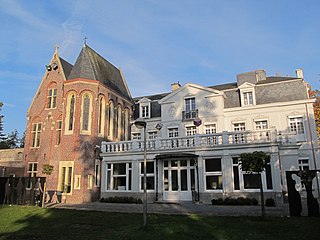
The Maaltebrugge Castle, located in the Maaltebrugge Park on the outskirts of Ghent, probably dates from 1754 and was called Château Maaltebrugge in the early 19th century. It was the country retreat for the de Hemptinne family in the summer months. The castle itself is built in classicist style, but the adjacent Maaltebrugge castle chapel is neo-Gothic.
37. Pontbrug
The Pont Bridge is a concrete arch bridge that connects the village center of Drongen in the East Flemish capital of Ghent with the Assels and the residential area Drie Leien in Afsnee, also a borough of Ghent. The Pont Bridge over an arm of the river Leie is the only access road for car traffic to these districts, as they are located on an island between two arms of the Lys and the Ringvaart. The Lys is in fact a northern branch here, which flows from the Drie Leien past the abbey and the town square of Drongen towards Ossemeersen and Ghent. This Lys arm is not usable for shipping. After all, at the connection with the Ringvaart there is an extremely low passage.
38. Stadsmuseum Gent
The Ghent City Museum is a museum in the Belgian city of Ghent. The museum exposes the city history and opened its doors on 9 October 2010. With respect to the collection that is shown, the history of this museum goes back to 1833, the year in which the Oudheidkundig Museum van de Bijloke in Ghent was founded. In 1928 the museum was situated in the Bijloke abbey - this led to the name Bijlokemuseum.
39. Arnold Vander Haeghen
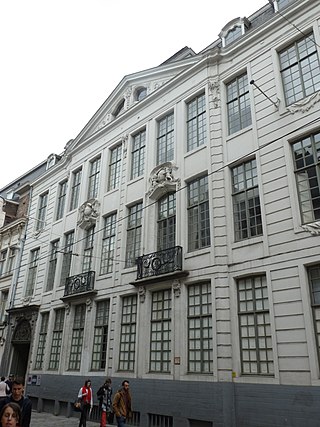
The Arnold Vander Haeghen Museum in the mansion Hotel Clemmen is a museum in the Veldstraat in the Flemish city of Ghent. Highlights of the collection include a reconstruction of the study and library of the Belgian Nobel Prize winner Maurice Maeterlinck, the cabinets of Charles Doudelet and Victor Stuyvaert and a Chinese salon. The museum managed by Historische Huizen Gent is located in the building of the former Hotel Clemmen, a patrician house that was built in 1746 to a design by David 't Kindt.
Wikipedia: Museum Arnold Vander Haeghen (NL), Heritage Website
40. Groot Begijnhof Sint-Elisabeth
The Great Beguinage of Sint-Amandsberg is an eight-hectare beguinage in the Sint-Amandsberg suburb, just outside the centre of Ghent, Belgium. It was built between 1873 and 1874 on the abandonment of the Old Saint Elisabeth Beguinage in the city centre. There is also a third beguinage in Ghent, that of Our-Lady Ter Hooyen.
Wikipedia: Great Beguinage, Sint-Amandsberg (EN), Heritage Website
41. Minardschouwburg
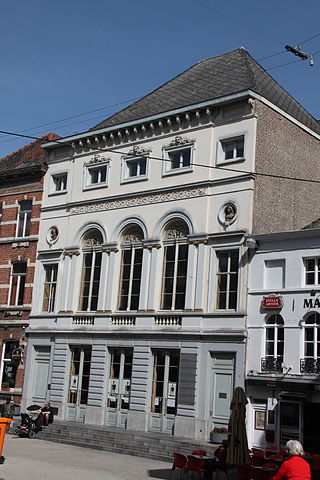
The Minard Theatre, commonly referred to simply as "De Minard", is a theatre in the Belgian city of Ghent. The Minard Theatre is located on the Walpoortstraat in the Waalse Krook. It was built in 1847 by the Belgian architect Louis Minard, as a reaction to the French-speaking theatre and opera in Ghent.
42. Wolweverskapel
The Wool Weavers' Chapel is a former chapel that was part of a complex with a place of worship that was founded by the guild of wool weavers. It is located in the Belgian city of Ghent on the Kortedagsteeg. The chapel and an outbuilding against the west façade are all that remain of this complex.
43. Sint-Baafskerk
St. Bavo's Church in the Belgian borough of Mendonk is a church building dedicated to Bavo of Ghent. This single-nave brick church was completely rebuilt around 1870 according to the plans of architect E. De Pierre-Montigny. It was badly damaged by German artillery fire in 1944 and rebuilt in neo-Romanesque style under the direction of architect A. Bressers.
44. Kapel Onze-Lieve-Vrouw van Lourdes
The Onze-Lieve-Vrouw-van-Lourdeskapel, is a brick chapel in neo-Gothic style located at the junction of the Amand Casier de ter Bekenlaan (Mariakerke) and the Beekstraat (Drongen). The chapel is built with two bays under a gable roof with slates. The side walls have two pointed arch windows and in the rear façade is an eight-lobed oculus with a stained glass image in honour of the Sacred Heart. On top of the façade is a metal cross.
Wikipedia: Kapel_Onze-Lieve-Vrouw_van_Lourdes_(Drongen) (NL), Heritage Website
45. Design Museum Gent
Design Museum Gent is a museum in Ghent with an extensive collection of Belgian and international design. The collection includes designs from the Art Nouveau of Henry Van de Velde to contemporary avant-garde design. Located in the tourist heart of the city of Ghent, the museum complex consists of an 18th-century mansion and a modern wing. It is one of the twenty most visited museums in Belgium.
46. Hogeschool Gent: Koninklijk Conservatorium
HOGENT is one of the 17 Flemish university colleges. It was created in 1995 during the reform of higher education in Flanders from a merger of thirteen educational institutions. The branches of the university college are spread in Ghent, Aalst, Melle, Lokeren and Bottelare:Campus Aalst Campus Bijloke Campus Grote Sikkel Campus Ledeganck Campus Lokeren Campus Melle Campus Mercator Campus Schoonmeersen Campus Vesalius Proefhoeve Bottelare Site Geraard de Duivelstraat Site Buchtenstraat (FTI-Lab) Sports hall
Share
How likely are you to recommend us?
Disclaimer Please be aware of your surroundings and do not enter private property. We are not liable for any damages that occur during the tours.
